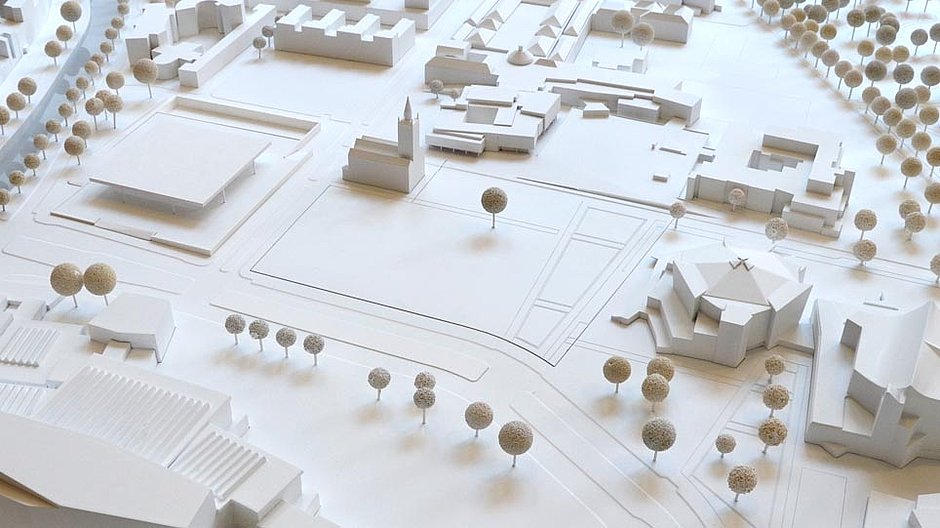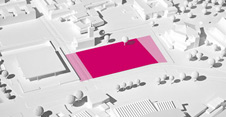Bereichsnavigation
Museum of 20th Century
The Kulturforum is getting a new building: a museum of twentieth-century art. Along with the "Mies building", it will enable the Nationalgalerie to show its major collection of twentieth-century art in a coherent form at last.
Plans for a New Building to Show Twentieth-century Art at the Kulturforum
In November 2014, the Bundestag, Germany’s parliament, resolved to assign 200 million euros to the Stiftung Preußischer Kulturbesitz (Prussian Cultural Heritage Foundation) for a new building to show twentieth-century art at the Kulturforum. The new building is needed because for decades it has only been possible to exhibit small selections from the Nationalgalerie's comprehensive collection of twentieth-century art.
The new building will allow several internationally significant art collections to be displayed together permanently for the first time: the Nationalgalerie's collection of twentieth-century art, the Marx and Pietzsch collections, parts of the Marzona collection, which is embedded inthe Staatliche Museen, and works from the Kupferstichkabinett (Museum of Prints and Drawings). They will be shown both on the lower level of the Neue Nationalgalerie and, above all, in the exhibition spaces of the new building.
More information on "Nationalgalerie 20 - a new museum at the Kulturforum in Berlin".
The Nationalgalerie's Collection of Twentieth-century Art
At the beginning of the twentieth century, Berlin was a city of the avant-garde. The director of the Nationalgalerie, Hugo von Tschudi, had opened the doors of his establishment to modern art as early as the late nineteenth century, when he acquired pictures by French Impressionist painters. His successor, Ludwig Justi, enlarged the collection of classical modernism. In 1919, he set up the "Gallery of the Living" in the Kronprinzenpalais on Unter den Linden. Under this heading, the Nationalgalerie showed key works by Max Beckmann, Rudolf Belling, Lyonel Feininger, Ernst Ludwig Kirchner, Paul Klee, and many other influential modern artists. It continued to do so until this department was closed by the Nazis in 1933. In the Third Reich, large parts of this collection were labeled "degenerate art" and were confiscated or destroyed.
The collection of the Nationalgalerie suffered extensive losses as a result of Nazi rule and the Second World War. In 1949, the partition of Germany split the collection into two parts, which were developed along different lines in the East and the West. The Nationalgalerie, as part of the Staatliche Museen zu Berlin, made a particular effort to acquire modern art systematically in the post-war period. Other important paintings were purchased for the collection with the help of the “Verein der Freunde der Nationalgalerie”, the association of friends of the gallery. After the reunification of Germany, the collection was augmented with that of the Nationalgalerie in East Berlin, including the art of the GDR. In recent years, the Nationalgalerie has expanded its collection of twentieth-century art on a large scale by making numerous acquisitions, as well as by receiving donations from private collectors.
Only selections from this collection could be shown in the Neue Nationalgalerie, however, owing to the limited exhibition space available there. The planned Museum des 20. Jahrhunderts is intended to give visitors a comprehensive view of art as it developed from around 1900 to the end of the twentieth century. Some of the works of classical modernism will be put on display in the Neue Nationalgalerie after the completion of the refurbishment work, beginning in 2020. Classical modern works will also be exhibited in the new building. The presentation there, however, will focus on the art of the second half of the twentieth century.
Location
The Competition at a Glance
The website for the new museum building at the Kulturforum is following the progress of design and construction work up until the opening. more



